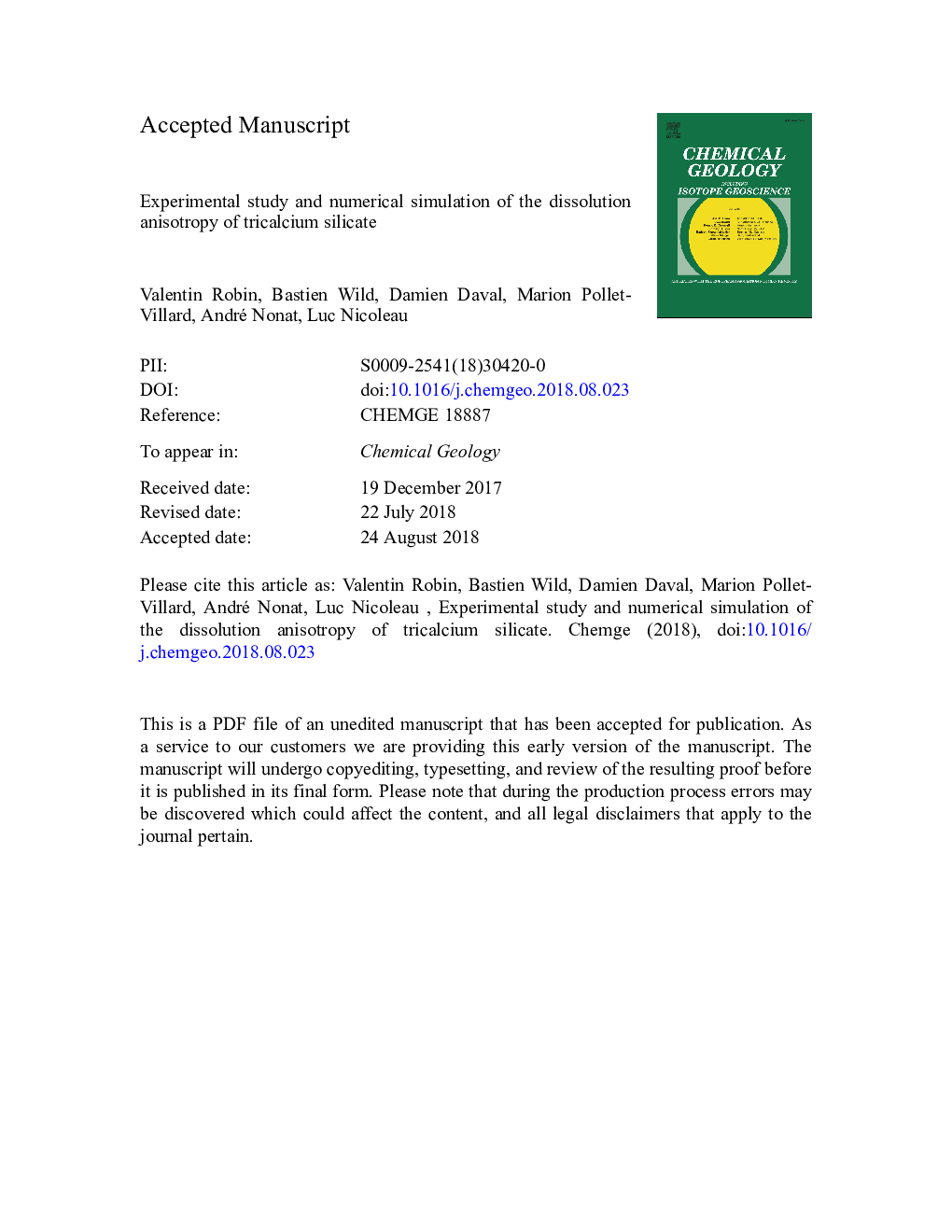| Article ID | Journal | Published Year | Pages | File Type |
|---|---|---|---|---|
| 10224329 | Chemical Geology | 2018 | 40 Pages |
Abstract
Improving our understanding of the hydration rate of the principal mineral phases of cements is key to better control the mechanical properties of cement paste and of concrete-based products. In the present study, the dissolution kinetics of the principal mineral phase of cement (alite Ca3SiO5), was investigated by combining powder dissolution experiments with face-specific interfacial dissolution rate measurements. Experiments demonstrate the anisotropic reactivity of alite, which suggests that dissolution cannot be described by an isotropic and homogeneous shrinkage of the grains. Numerical simulations show that the dissolution anisotropy results in a gradual increase of the interfacial dissolution rate averaged over the entire crystal, followed by a dramatic drop at greater reaction progress. However, such an interfacial dissolution rate increase cannot counterbalance the decrease of the surface area, such that the hydration rate remains a decreasing function of time. We conclude that the sole variation of the interfacial dissolution rate as a function of the reaction progress cannot account for the early increase of the hydration rate generally reported in the literature, which, instead, may have to be sought in the increase of the specific surface area because of the nucleation and expansion of etch pits at the alite surface.
Related Topics
Physical Sciences and Engineering
Earth and Planetary Sciences
Geochemistry and Petrology
Authors
Valentin Robin, Bastien Wild, Damien Daval, Marion Pollet-Villard, André Nonat, Luc Nicoleau,
